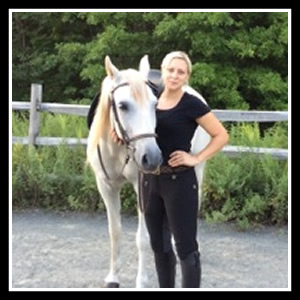Stretch In The Canter

Good morning this is Will Faerber from Art2Ride and I am here with my associate trainer Amber Matusek and her horse Legolas. Today we are going to continue our discussion of beginning the horse in the canter.
Amber bought this horse about a year ago, and she has spent this time working him long and low. She started with us about three months ago and we have just been starting Legolas on the canter on the lunge line. She has gotten to the point where she can sit to the trot quite nicely in a good active working trot, which means she can begin the canter. Remember the trot has to be correct before you begin the canter. Once we can get the horse to work over it’s back while supporting our weight, then we can become serious about the canter.
Amber demonstrates the transition to the canter in the video. We won’t worry about what he is doing with his head and neck at this moment, otherwise the rest will go to hell. If we get the rest of it working correctly, the rest will come through. Look how beautifully he is able to stretch in the canter. You must ultimately be able to stretch your horse in all three gaits. If you have been working your horse correctly in the trot work and your horse stretches pretty well, then it should go very nicely as shown with Legolas.
Amber demonstrates the transitions for us in the video. Just remember that the rhythm should not change when your horse is stretching in the trot and when he comes back up. What’s important is that you start the canter from behind, not whether or not the horse can keeps his head perfect. This is the first time we have tried this transition with him with a rider, and I am very pleased! Now she will let him walk and give him a little rest.
Once again, this is Will Faerber from Art2Ride with my associate trainer Amber and her horse Legolas. Try to get your horses working over their backs and then stabilize the trot and make sure the trot is correct before asking for the canter. You will have a far greater chance of success. Don’t worry about whether the horse’s neck stays perfectly in the same position when you begin asking for the transition, that’s okay. If we get the horse working from behind, in no time at all the horse will stabilize in the bridle in the canter.





Leave a Reply